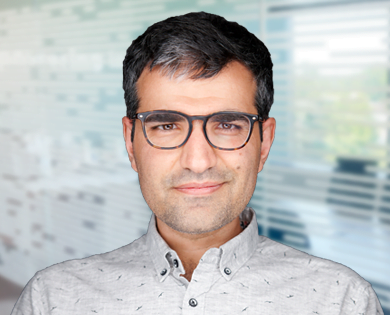Reliable access to broadband services for every person (and everything) everywhere has been a reoccurring discussion for developing any modern cellular technologies. Despite substantial successes of 4G and 5G cellular systems, there are still unserved and underserved populations. Measurements reveal up to 400 million people around the world still encounter difficulties to enjoying stable and high-quality connectivity. In the USA approximately 6 percent of the population do not have access to broadband service. Many industries require seamless and secure connectivity, and providing global, secure monitoring for shipping containers, carrying products under stringent environmental conditions during the voyage, is challenging. Seamless connectivity for cargo and urban taxi drones, given the expected growth of the number of drones in coming years, and for vehicles operating at high speed, trains, hyperloops and commercial aircraft becomes more crucial. Major disasters, with devastating and long-standing effects on infrastructures, are hurdles to developing and maintaining universal connectivity. Operators may be forced to compromise connectivity for costs, leading first responders in places where a major disaster has disabled without reliable video/audio connectivity.
Spaceborne and airborne networks, in combination with terrestrial wireless infrastructure, can provide some hopes. The idea of putting 5G on satellites, Non-Terrestrial Network (NTN), for leveraging spaceborne infrastructure, has gained attraction in industry and standard bodies. SpaceX, United Launch Alliance (a joint effort by Boeing and Lockheed Martin), Northrop Grumman and Blue Origin are some major players in this industry.
To make it cost-effective for 5G to be used natively on satellites, a hardware and software ecosystem that supports NTN has been kicked off by forming Non-Terrestrial Connectivity Solutions (NTCS) Project Group in Telecom Infra Project (TIP). Partnering with Mavenir, Ligado is developing base stations for beyond-5G mobile satellite networks.
However, there are challenges for fully harnessing the space for achieving universal connectivity. With satellites, the main challenges are high latency and spectrum scarcity. As LEO or MEO satellites are usually moving faster than the devices they serve on the ground, mobility (handover) may become challenging. Latency may not be a pressing issue with pseudo satellites (or HAPS), but HAPS has its own unique challenges, such as like the requirements for lightweight structures, limited energy storage, navigation, endurance, stability, and safe operations, to name some.
All the work may not overcome 5G’s main drawback of being designed mainly for terrestrial use. The approach for developing NTN in 3GPP has been from a defensive position, by aggressively adhering to 5G features as much as possible and as long as possible. This minimalistic approach, to cope with the effects of long delay and large Doppler effect and movement of satellites, is appreciable given the prohibitive costs and standard endeavors of developing an NTN from scratch. But, not surprisingly, it is not ambitious enough and may not be able to level up to the potentials of spaceborne networks. Eventually, NTN can’t provide connectivity to users in places where it’s difficult, costly or impossible to install ground base stations, such as remote areas, underdeveloped regions, in the middle of the ocean, and a disaster-prone area. Multi-hop inter-satellite communication, using laser-link technologies, to enable long-distance communication without reliance of terrestrial infrastructures, could be a breakthrough, but this technology is currently in its infancy and may not be deployed for current satellite networks.
Providing universal coverage, particularly for unserved and underserved areas, require disruptive shifts in the way the cellular systems are designed and operated. Integrated spaceborne networks and terrestrial wireless infrastructure is expected to be a native part of the next generation of cellular systems (6G). Let’s hope with 6G satellites a true broadband access to everyone and everything everywhere be finally a reality.
About the Author
Mohammad G. Khoshkholgh D. holds a Ph.D. from the University of British Columbia (UBC), Vancouver, Canada. Mohammad has authored 26 IEEE transactions papers and 22 IEEE conference papers. One of his journal papers was selected for IEEE ComSoc Best Readings on Cognitive Radio. In 2017, he was selected as Exemplary Reviewer IEEE Transactions on Wireless Communications. He was the holder of Vanier Canada Graduate from 2015 to 2018 and Four Year Fellowship from 2014 to 2015. His primary research interests include design and analysis of wireless communications systems, non-terrestrial networks, and machine learning and artificial intelligence.


